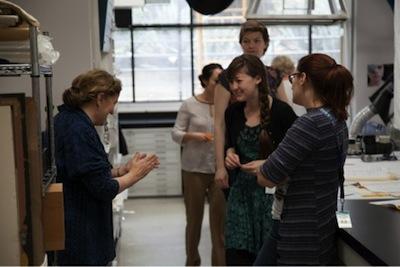The science and research surrounding art conservation is a dynamic and evolving field of study. The paper laboratory in the Conservation Center at the Los Angeles County of Museum of Art (LACMA) recently held an informative two-day workshop on aqueous cleaning and stain reduction for works of art on paper. The class included lectures as well as, hands-on training, highlighting the use of ammonium citrate di-/tri-basic, sodium borohydride and agarose gels. The workshop was taught by Antoinette Dwan (private paper conservator from Northern California). The workshop would not have been possible without the generous support and funding by Linda Shaffer (private conservator from Shaffer Conservation) and Peter Loughrey (Director of Modern Design & Fine Art from Los Angeles Modern Auctions).
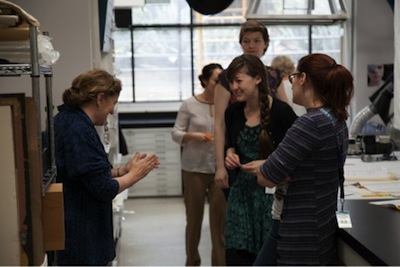 Participants included 13 conservators, from Antoinette Dwan (left), LACMA staff, and other professionals
Participants included 13 conservators, from Antoinette Dwan (left), LACMA staff, and other professionals
Traditional methods of stain reduction include the use of oxidizing bleaches (not over-the-counter!) and exposure to sunlight (don’t try this at home). Over the two-day series, Antoinette Dwan described novel approaches to stain reduction which take advantage of the ionic properties found in ammonium citrate dibasic (ACD) and ammonium citrate tribasic (ACT) to break up “dirt complexes” and reduce discoloration and sodium borohydride, a safe and controllable reducing bleach, also used to reduce discoloration and staining in works of art on paper.
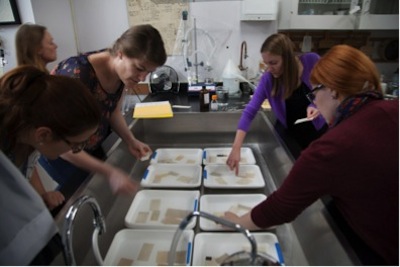 Workshop participants placing various paper samples into aqueous cleaning solutions
Workshop participants placing various paper samples into aqueous cleaning solutions
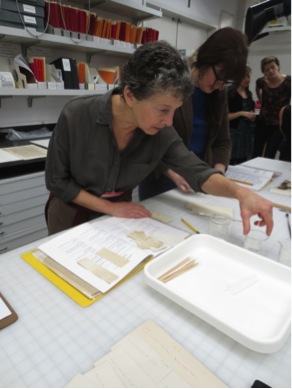 Paper conservator Linda Shaffer locally applying ammonium citrate di-basic for surface cleaning
Paper conservator Linda Shaffer locally applying ammonium citrate di-basic for surface cleaning
The completed test sample (below) presents the results of the various treatments undertaken in the workshop. The strip at the top was not treated and is typical of how paper ages over time. Notice the test sample was cut into sections allowing us to compare various treatment approaches. The results range from little or no stain reduction to a noticeable shift in color indicating a successful reduction of discoloration and yellowing. These positive results were very exciting as the removal of stains and discoloration can both slow the deterioration of the paper substrate while also presenting a more aesthetically pleasing work of art.
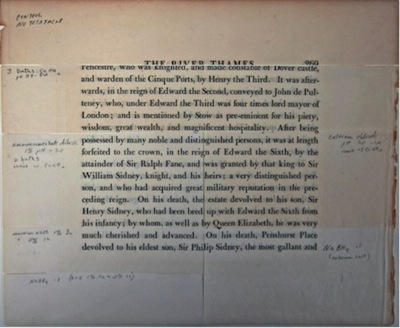 Completed test sample
Completed test sample
There are few opportunities to share information and spend time with colleagues is in a small workshop setting. As IMLS Fellows we were especially thrilled to take part in the workshop and learn new methods, techniques, and approaches to treatment from a seasoned professional such as Antoinette Dwan.
Photos by Erin Jue and Gawain Weaver
Generously funded by Linda Shaffer and Peter Loughrey



